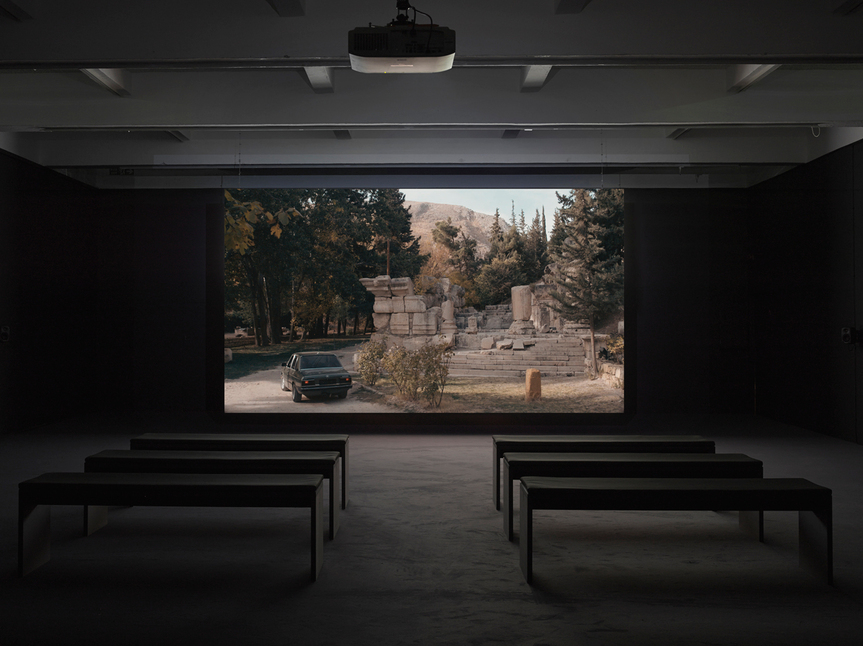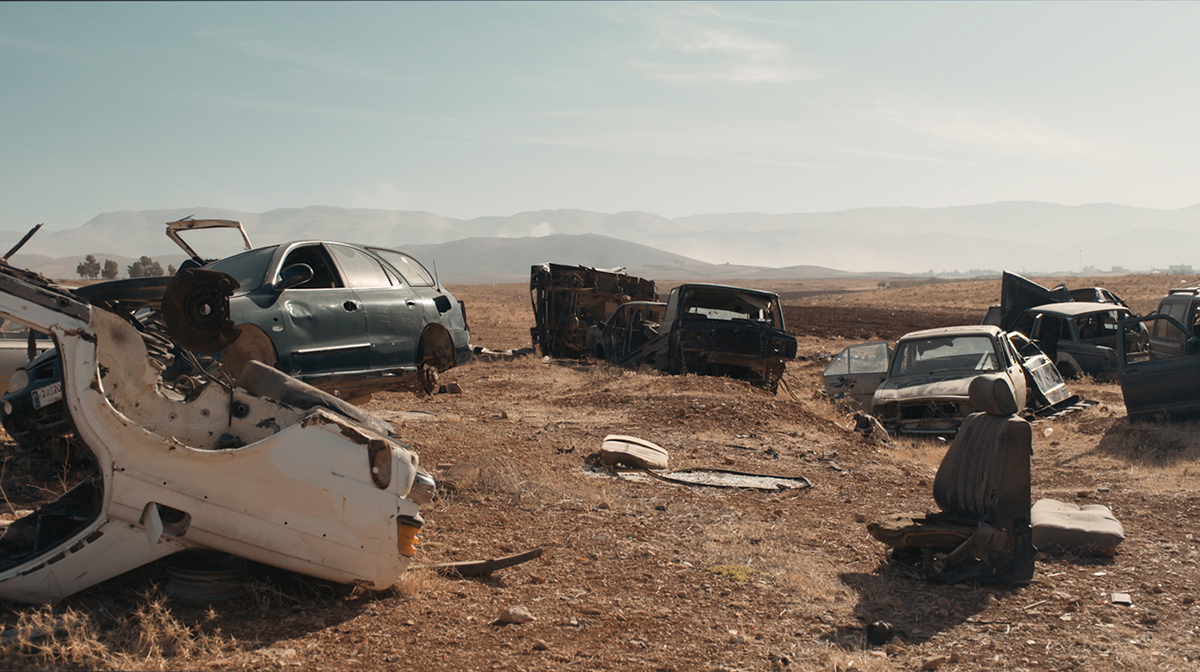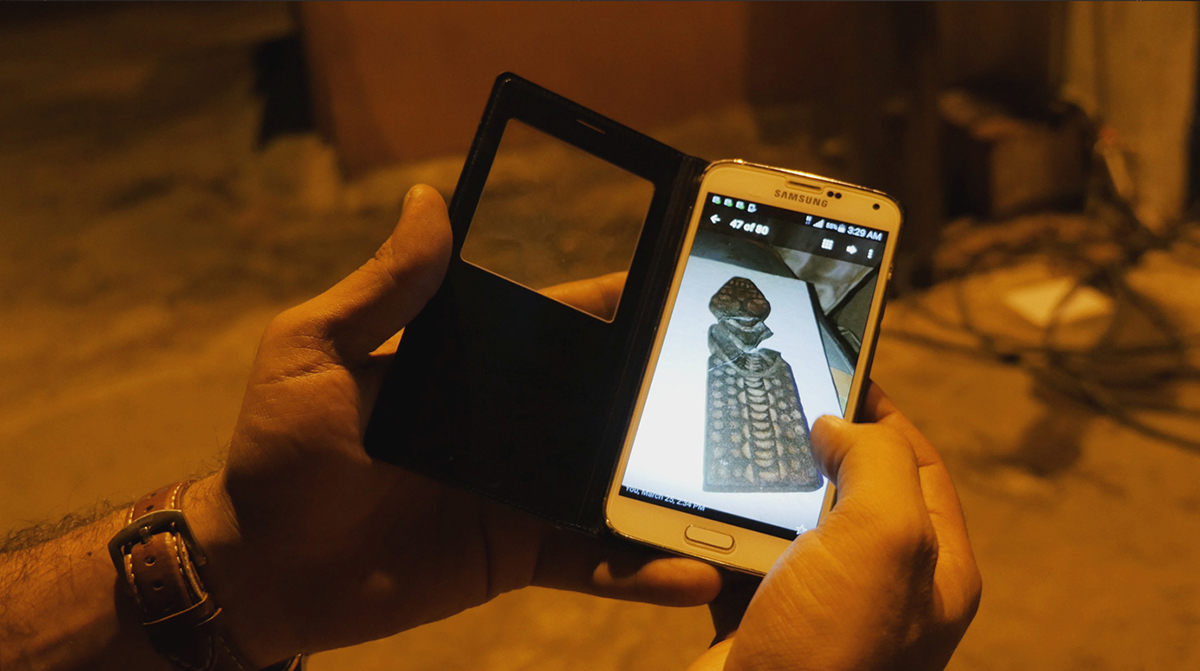Shows
Maeve Brennan’s “The Drift”


Beirut-based filmmaker Maeve Brennan’s The Drift (2017) extended subtly beyond the screen before the first frame was even shown. Entering Chisenhale Gallery, which was configured like a cinema for the exhibition, it was easy for visitors to miss that the seats and carpet below them were of a similar fabric to that found in car upholstery—a prefatory initiation into the film’s subject matter.

So it is that objects are able to traverse borders—both physical ones and those defined by function, meaning, history and perspective. In time, their value and significance changes, and we may yield, resist or actively contribute to the process.
The Drift, which is set in Eastern Lebanon’s Beqaa Valley and the city of Beirut, opens to a wide shot of an open plain. As in so many road movies, a solitary car drives toward us, suggesting the beginning of a journey. It belongs to one of the film’s three main characters, Mohammed Zaytoun, a charismatic young mechanic who runs one of the area’s seven scrapyards, and spends his free time scavenging parts for his beloved BMW.
A little later, the camera pans over the exhaust pipes, headrests and dashboards in one of these scrapyards, before echoing this image of fragmentation in similar shots of broken pottery, and the remains of the region’s ruined Roman temples. Through these objects, we are introduced to two other characters: Hashem is a self-taught archeologist whose job is to reassemble a seemingly endless influx of pottery fragments, the excavation of which was made possible by the destruction of central Beirut during Lebanon’s civil war; Fakhr el-Fakhry is the dedicated guardian of the aforementioned temples.

The three men are connected by their affinity with objects, which, within the film at least, appears to be what gives their lives meaning. There is a suggestion of purpose: Fakhr speaks at length of the importance and efficacy of his guardianship, claiming the ruins of temples are a part of him and run in his blood; Mohammed’s taste for powerful cars intimates an intended destination; sporadic shots show Hashem’s progress in repairing a pot. However, futility is also implied, or at least the sense of a task so large it can seem never-ending. There is a certain absurdity in watching a man in a scrapyard struggling to put a car door into the trunk of another car, and if we consider objects in only material terms, a similar folly exists in the occupation of guarding ruins. This does not make the characters ridiculous, however, but relatable. Toward the end of the film, Hashem, apparently dissatisfied, pulls the pot he has been working on into two pieces and places them among hundreds of other shelved fragments. The vanity is compounded by recurring shots of Zaytoun’s car “drifting” in dusty off-road spaces. This is a technique where a driver deliberately oversteers, causing the tires to lose traction and the vehicle to move in circles, using much energy and ultimately going nowhere. As Zaytoun says at one point, further justifying the film’s title: “So we go on and drift. It’s all going to fade.” Although these car parts, pottery shards and temple ruins are all scrap, it is the patience and passion of the three men that imbues the fragments—and the film—with meaning.

Many of the scenes are staged, highlighting the film’s ambiguous status between art and documentary, much as the curation highlighted an ambiguity of medium. This is mediated by a laudable self-awareness. One clearly composed shot begins with Fakhr asking for a cigarette while his friends sit behind him like a posing entourage. The frame is broken when one of them leans forward to say: “I’ve been asking him to light one. It would look nice on camera.” Such moments give an agency to the characters, who might otherwise be reduced to type. Brennan was born in London, and thoughtfully avoids the pitfalls of a Western filmmaker working in the Middle East. Rather, her film explores its subject matter in an artistic mode while acknowledging—but not claiming as objective—its documentary qualities. It eschews direct comment, and diffuses the commentary power of editing through frame-breaking. Wider sociopolitical issues are implicit, but not spelled out. This balance is not easily struck, but Brennan has successfully explored the fetishizing of objects without fetishizing people.
Maeve Brennan’s “The Drift” is on view at Chisenhale Gallery, London, until June 4, 2017.









